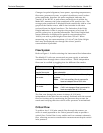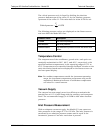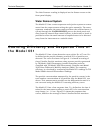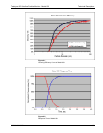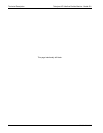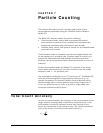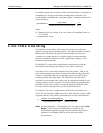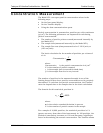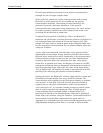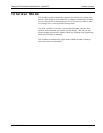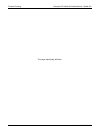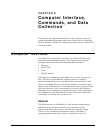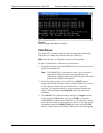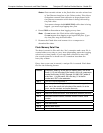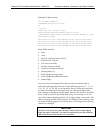
Particle Counting Teledyne API Ultrafine Particle Monitor - Model 651
64 07506C DCN6727
for increased statistical precision at low particle concentrations
through the use of longer sample times.
When a particle enters the optical viewing volume and is being
detected, no other particles can be counted. As the particle
concentration increases, the amount of time blocked by the
presence of particles becomes significant. If the particle
concentration were computed using elapsed time, the value would
be under-reported, therefore the actual sample time needs to be
corrected for this blocked or dead time.
To adjust for this particle “coincidence” effect, the Model 651
measures the “dead time” resulting from the presence of particles in
the viewing volume and subtracts it from the sample time. This
sample ‘live-time’ value is used in place of the elapsed sample time
for the concentration calculations for the primary display when not
using the Totalizer.
At very high concentrations, the dead-time value grows and the
adjustment becomes large. Single particle events may not even be
detected since particles are nearly continually in the measurement
viewing volume and the accuracy of the ‘live-time’ measurement
begins to diminish. When the measured ‘live-time’ value drops
below 40% of elapsed (real time), the display will show an “OVER”
annotation indicating that the measured concentration exceeds its
specified operating range. When the ‘live-time’ value drops below
10% of elapse time, the display will show a concentration of 9.99e
5
particles/cm
3
indicating an extreme overload condition.
During operation, the Model 651 collects single particle counts and
dead-time corrected sample time every tenth of a second. The
concentration value reported on the front-panel display is updated
each second. It uses data collected over the previous second of
elapsed time to calculate concentration. If the concentration is
<20.0 particles/cm
3
, a 6-second running average of particle count
data is used to calculate the displayed value. A single particle
counted during this six-second sample is displayed as 0.03
particles/cm
3
which is the minimum value that can be displayed
(other than 0.00) without using the Totalizer. Concentration data is
also available from the data communications ports and it is
‘aggregated’ or summed from each tenth-second measurement with
programmable sample periods from 0.1 second to 3600 seconds.



